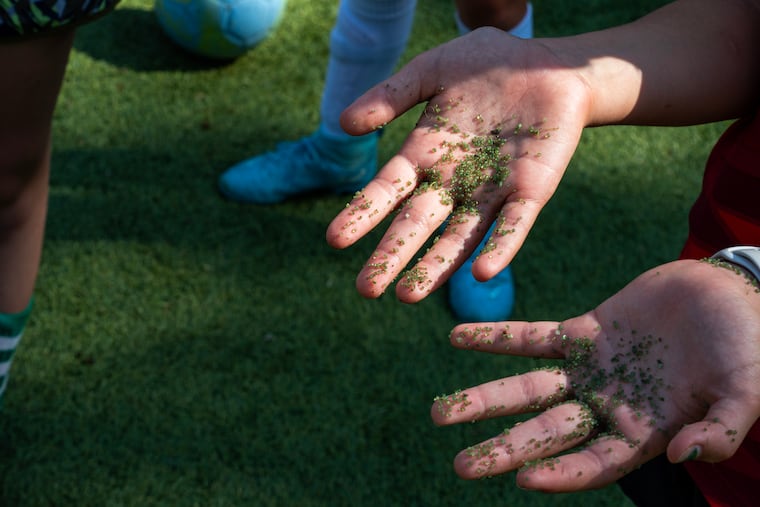Health Concerns Over Artificial Turf: Understanding Risks for Kids and How to Address Controversies Surrounding Its Use.
Recent concerns regarding the safety of artificial turf have prompted scrutiny from health experts, including Yale epidemiologist Vasilis Vasiliou, who has taken a firm stance against its use, particularly for children. Vasiliou, a father of five, chooses not to allow his children to play on synthetic fields due to findings from his research indicating that the infill material—often made from ground-up tires—contains various known carcinogens, endocrine disruptors, toxic metals, and phthalates. He emphasizes the urgent need for thorough studies to understand the long-term health implications of these chemicals on young athletes.
While Vasiliou’s perspective is backed by significant research, it appears to represent a minority viewpoint in a landscape where synthetic turf is increasingly prevalent. North America is home to approximately 18,000 synthetic turf fields, with around 1,500 new installations each year. Given the popularity of sports like soccer, football, and lacrosse, many children find themselves playing on these artificial surfaces.
The synthetic turf industry advocates for its benefits, citing cost savings, extended playing time, and lower maintenance needs as key advantages. Proponents suggest that extensive studies show no direct link between synthetic turf and health issues in children. However, critics like Vasiliou argue that existing studies have not adequately considered the potential health and environmental risks posed by the toxins present within the turf.
As communities grapple with decisions about whether to install new fields or replace existing ones, critical questions arise regarding the health safety of turf and its environmental impact. Synthetic turf, known for its resistance to muddy conditions, can offer an effective playing surface, notably increasing available playtime—from approximately 1,200 hours for natural grass to nearly 3,000 hours annually. However, these benefits are often tempered by significant heat absorption, as turf can reach dangerously high temperatures in warm weather, leading to potential accounts of heat-related illnesses among players.
Turf fields, especially those utilizing crumb rubber infill, raise troubling questions due to the presence of per- and polyfluoroalkyl substances (PFAS), lead, and other harmful materials. While studies have indicated limited evidence linking turf to adverse health outcomes, there remains skepticism surrounding these findings. Experts caution that the current body of research is insufficient to confirm the safety of artificial turf products, particularly in light of the potential for harmful exposure.
From an environmental standpoint, artificial turf is touted for its water efficiency and lower pesticide requirements. Nonetheless, critics highlight its role in generating microplastics and contributing to landfill waste, raising troubling questions about sustainability. The lifespan of turf fields is finite, and recycling options are rare, further complicating environmental challenges.
When weighing whether to choose artificial turf or natural grass, cost is an essential factor. Grass fields are typically cheaper to install and maintain initially, but their maintenance costs may escalate, especially in regions that do not support year-round growth. Advocates for turf stress that the long-term benefits in usage frequency justify its higher upfront investment.
Navigating this complex issue involves addressing health, environmental, and financial concerns. Health authorities recommend precautionary measures for those engaged with artificial turf, including washing exposed skin, avoiding play during extreme heat, and monitoring for signs of heat exhaustion. As communities increasingly favor synthetic solutions, parents are urged to stay informed about the ongoing discussions surrounding the safety and well-being of young athletes.
In conclusion, the dialogue around synthetic turf encompasses a web of health considerations, environmental impacts, and economic realities that warrant careful evaluation as communities make decisions impacting future generations. The conflicts between innovation in recreational surfaces and safeguarding child health continue to evoke a spirited debate not just in sports circles but among parents, communities, and health professionals alike.
Media News Source







